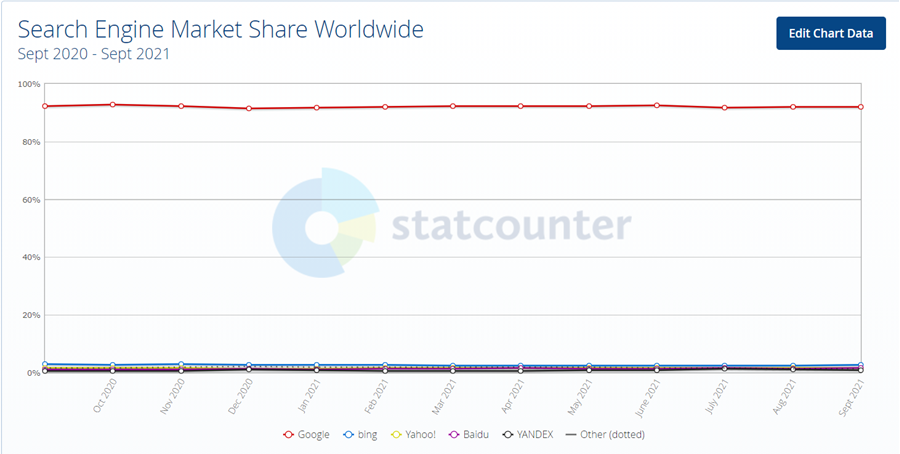blog

Posted On Tuesday, October 5, 2021
Author: Philip Sampson (Account Director)
For the sake of keeping this article simple, we will be looking at what works for Google. Never forget that there are other search engines out there, but at the same time, Google is clearly king...


… so we’ll focus on them. And truth be told, what works for Google will generally work for the others.
So, on that note, Google acknowledges it uses around 200 factors to rank your website in their search results. Obviously this is too much to focus on so we’ll look at what has been shown to be the most significant, through many man hours of testing and case studies. We’ll also keep this pretty short as we’ll be diving in to most of the topics independently and in depth down the line. So let’s have a look at what you should be concerning yourself with as a recruiter!
Keywords are the important words and phrases that you want to include throughout your site so that Google knows what you are all about. These are generally the relevant search terms that people are punching into the search bar. So, for example, if you are based in Western Australia, recruiting in the medical industry and find yourself trying to fill lots of radiology jobs then it would obviously help loads if your website appeared on the first page of results when someone types ‘radiology jobs’ into a search bar somewhere in Perth.
The absolute first task of any SEO campaign is keyword research! Once you know what keywords and phrases you are targeting, then you can move forward with cleverly placing them throughout your site.
Google is looking for a combination of things when it comes to content, most include proper use of your target keywords. It should be well structured from layout to the proper use of heading tags. By using features such as lists, you make things easy for the Googlebots to understand the information and they may even show the list in the search results (rich snippets, more on them later).
These are bits of data that aren’t directly visible on your webpage but can be found in the code that Google will inspect and probably show as the search result. This includes the page title, page description and a few other things. A high priority in any SEO campaign for recruiters and a topic we will be covering in depth.
Though this probably should fall under page content… because it is, the topic of image optimization is such a big one that it deserves it’s own section. It includes many things from selecting the correct dimension sizes and compression of the images to picking the right file formats and tactical keyword placement in the filename and metadata. While image optimisation on it’s own isn’t huge unless you have a website that might attract visitors from Google image search (not really applicable to job sites), the knock on effects it has in many other areas adds up enough to make it worth undertaking.
So much can affect this… the quality of your hosting, the location of your server, how well optimised your code is, images (see above) and lots more. How soon your page loads and is interactive to a visitor after clicking a search result is important to user experience and that matters a lot to Google. Check out Google PageSpeed Insights to see how Google feels about how your page loads.
After a few years of leaning towards it, in September 2020 Google finally declared that every single website it indexes will be primarily judged on its mobile version, using a bot declaring itself as a mobile device to your site when it visits. This not only means that your website has to look good on mobile but that speed is even more critical as Google are aware of, and factor in, the network limitations such as signal strength & data caps that mobile users often encounter.
When Google sends a bot to come inspect your site, it crawls its way through your site from page to page via the links throughout. While it does so, it is also building a map of your site using the page addresses it visits. By having a well organised website with things such as categories keeping things segmented properly in a hierarchical manner, Google will better be able to understand your site and show the most relevant page in the search results for the search term used.
Though being basically critical to your site making the search results pages at all, this is something that is incredibly easy to set up, has no ambiguity in terms of execution for SEO and every site should come good to go, with this included from day one. If you load your website up and see the padlock next to your URL in the address bar then no worries.
If Google puts one of your web pages at the top of a search result and only 10% of people click on your link while 25% of people skip over your result to click on the second result then guess what Google is gonna do. Exactly, you are going to get shuffled around to better meet the will of the people. We’ll dive into what you can do on this one down the line.
A bounce is when someone visits your site and leaves shortly after without any further interaction like clicking around. While Google search doesn’t know exactly what visitors are doing on your website, they can tell when a search result link is clicked and when a results page is reloaded. So if a person does a search, clicks a link, spends twenty seconds on the page and then pushes the back button to reload the results page, Google knows. I’m sure you can see how Google perceives this interaction negatively and if it happens often enough then you can expect to drop in rankings.
Such a strong ranking factor to Google while at the same time being one of the hardest aspects of SEO to control. Backlinks are links to your website from other websites. Google is looking at many things such as the authority of the website linking to you and the relevance of the linking page, link text and text around the link. We’ll be covering this one in depth, including the real and common dangers of doing a dodgy job on this one.